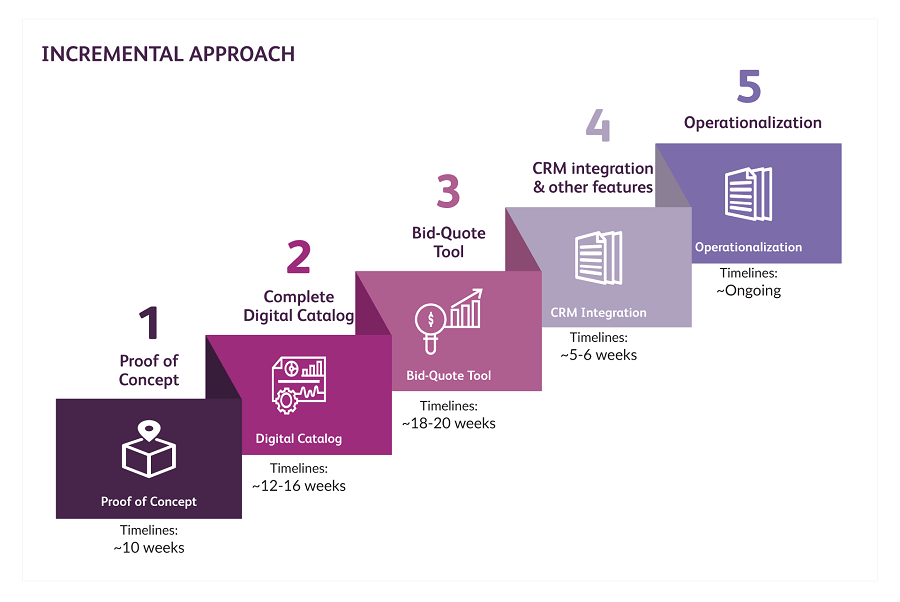After entering the new normal, companies and individuals alike have taken time to reflect on their digital initiatives. With the business landscape shifting from physical to digital, regardless of industry or sector, organizations continue to make progress on their own digital transformation journeys. Even companies who are well-established and have enjoyed a long period of success are re-thinking their processes—especially when time-tested processes are showing signs of inefficiencies. However, as companies are turning to digital transformation as the answer, what are some common misconceptions that organizations still have?
To achieve success, you will need a total transformation
One of the most common misconceptions that organizations have about digital transformation, is the belief that your organization will need to totally transform your organization in order to see results. In reality, organizations can choose how much they want to transform their processes and still achieve success. Since there is a slew of different technologies that can tackle a variety of different use cases, organizations will be able to customize their approach to digital transformation and see what works best for them.
An incremental approach to digital transformation uses gradual steps towards digitizing specific use cases. This approach is especially useful for organizations who are new to digitization, since they will be able to experience the direct results of their changes. Other benefits to this approach include:
- Visible impact: Since each stage is gradually phased-in, organizations are able to see the business impact that each use case has provided.
- Flexibility and adaptability: With every stage belonging to a specific timeline, organizations can alter and change their direction throughout the journey.
- Tailorable: Specific changes can be made throughout each stage of the approach, allowing organizations to customize their decisions based on needs.
Digital transformation is just a passing phase
Another prevalent misconception is that digital transformation is a short-term fad that only impacts IT-centric companies. However, according to the IDC, by 2023, at least half of all GDP worldwide will come directly from digitally enhanced products, services and experiences. With digitization becoming the new normal, lagging organizations will be quick to see what they can quickly implement and take advantage of. However, the effectiveness of these changes is dependent on the long-term vision that the organization has for their digital initiatives. Without a long-term plan, then organizations will not be able to weave these use cases into their overall strategic goals.
For key decision-makers, implementing digital transformation into their organization can be a complicated, time-consuming and risky process. Especially for lagging organizations, many fear that a whole technical overhaul will have to take place. Not only will they have to introduce, implement and run brand-new technology, but they will also have to find a way to implement it over time. However, with the ability to implement changes piece-by-piece, organizations will find that they can gradually add to their digital transformation goal and easily adapt to any changes in the future.
Digital transformation is too large and complex
Case study: how an organization found success with incremental changes
A leading company that manufactures and provides repair services for turbine engine manufacturers and operators wanted to begin their digital transformation journey but needed help getting started. The client was able to dominate their industry through new offerings and improved processes but found that their capabilities catalog and sales toolkit were starting to fall short. As the client’s competitors started to surpass them, the client felt the pressure to start improving some of their key processes.
The client needed help with implementing a digital catalog and bid-quote tool into their existing systems, as they were using manual techniques that slowed their processes down significantly. As the client was new to digital transformation, we took an incremental approach while working with them such that specific use cases were implemented at staggered times so that the client could follow, learn, and see value with each component that was implemented.
We broke the process down into five steps, where the client would be able to start seeing changes in their processes in a relatively short amount of time. Since the client wanted to update and expand their digital catalogs and create a bid-quote tool, we ensured that these use cases would be able to integrate into their existing data warehouse architecture, sales structure and CRM system.
As a result of this transformation, the client was able to identify $500k worth of pricing improvement opportunities for just one out of ten product platforms and were able to monetize on $300k within the first quarter of launch. This is in stark contrast to the client’s existing manual processes that only identified $300k worth of pricing improvement opportunities across the nine other platforms and took them much longer to act on.
\When dispelling common misconceptions about digital transformation, taking a step-wise approach opens a whole new avenue of possibilities for organizations. With data-driven companies witnessing increased profitability, earnings and valuations, taking the first step will be the key to propelling your initiatives forward.
To learn how you can start your digital transformation journey, send an email to analytics@evalueserve.com.




